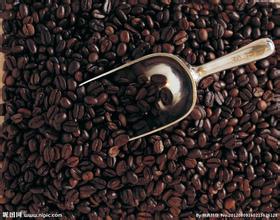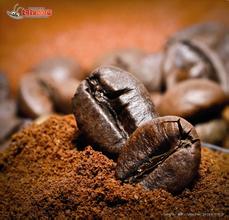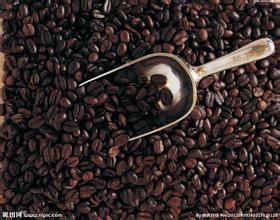Fresh and full-bodied Coffee Flavor description of Fenghuang Manor in Costa Rica
Costa Rican coffee beans are mainly Arabica coffee beans, processed by washing, bright in style, mild in acidity and excellent in sweetness. The Costa Rican Coffee Association manages the coffee industry throughout the country and has specialized scientific institutions to discover and improve the quality of indigenous coffee.
Coat of arms. On the shield surface, there is the rising sun rising from the sea, symbolizing the dawn of the new era; the three volcanoes of Balva, Ilasu and Boaz are located between the Caribbean Sea and the Pacific Ocean; two white sailing ships sail on the sea, symbolizing the trade between the country and other countries; the seven white five-pointed stars above represent the seven provinces that make up the country, and the white ribbon above the stars reads "Republic of Costa Rica". The upper part of the coat of arms is a blue ribbon with the words "Central America" written on it. Both sides are brown long oval leaf patterns, representing the country's main cash crops such as coffee as the highest administrative body, and the president as the head of state and government, responsible for safeguarding the constitution and national interests. The President and Vice President are elected by universal suffrage for a term of four years. The President cannot be re-elected and can only stand for re-election as a candidate after two terms (eight years). In the absence of the President, the First Vice President, the Second Vice President and the Speaker of the Parliament take over in turn. The current president, Luis Guillermo Solís Rivera, was elected in 2014 and served until May 2018. He has two vice-presidents and 21 ministers, all appointed by the president. The first vice president is Helio Fallas Venegas, and the second vice president is Anna Elena Chacón Echeverría (female, Ana Helena Chacón Echeverría)
Costa Rican coffee is definitely a boutique grown in a privileged environment. There are no fluctuations in the economic environment brought about by war, there is strong support from the government, there is a climate and altitude suitable for the growth of fine coffee, Costa Rica SHB can grow fine coffee at an altitude of about 1500 meters, volcanic ash soil provides nutrients for coffee growth, and there are enthusiastic and serious coffee producers. One of the most notable is Costa Tarrazu, produced in the Tarrazu region near San José, the capital. The production area benefits from the warm and humid air flow of the Pacific Ocean, has obvious dry and wet seasons, and the weakly acidic volcanic soil is rich in organic matter, which creates good conditions for the root development of coffee plants. The production area is 900-1600 meters above sea level, 80% of which are located at 1000-1400 meters. This coffee is known for its excellent quality and rich and balanced taste. Even coffee from the region's Laminieta farms is thought to have a flavor similar to Blue Mountain coffee.
Costa Rican coffee is mostly washed, honey treated beans are not common, honey treatment in small shops inherits the balanced taste of Costa Rican coffee, while bringing more surprises in alcohol and richness. Costa Rica coffee has a unique aroma, similar to flowers and faint fruit aroma, but the feeling is not cloudy, but fresh and rich, as if the whole body can penetrate the skin infiltration

Important Notice :
前街咖啡 FrontStreet Coffee has moved to new addredd:
FrontStreet Coffee Address: 315,Donghua East Road,GuangZhou
Tel:020 38364473
- Prev

Description of the flavor of Nicaraguan coffee with fruity aroma the characteristics of the producing area and the treatment method of the Tianci Manor
Nicaraguan coffee of high quality is in the forefront of coffee beans in the world and enjoys a good reputation. Its particles are moderate in size, mild in taste and very aromatic and mellow. Nicaragua is located in central Central America, bordered by the Pacific Ocean to the west and the Caribbean Sea to the east. The highlands in the north and the coastal plains in the east are part of the Central American volcanic belt. The eastern plain is high-temperature and rainy, with a tropical maritime climate. Suitable
- Next

Introduction to the sweet and fragrant coffee flavor description methods and methods of Bolivian snow vein manor
In the late 1950s, the leaders of the Bolivian nationalist revolutionary movement began to turn right. They proposed the establishment of a bourgeois democratic society, advocated an alliance with the United States, excluded leftists, abolished workers' supervision, froze workers' wages, and promoted labor, that is, communism. After the pressure from the United States, it compensated the foreign companies. Thus arousing the dissatisfaction of the people. In November 1964, R. Barrientos
Related
- Does Rose Summer choose Blue, Green or Red? Detailed explanation of Rose Summer Coffee plots and Classification in Panamanian Jade Manor
- What is the difference between the origin, producing area, processing plant, cooperative and manor of coffee beans?
- How fine does the espresso powder fit? how to grind the espresso?
- Sca coffee roasting degree color card coffee roasting degree 8 roasting color values what do you mean?
- The practice of lattes: how to make lattes at home
- Introduction to Indonesian Fine Coffee beans-- Java Coffee producing area of Indonesian Arabica Coffee
- How much will the flavor of light and medium roasted rose summer be expressed? What baking level is rose summer suitable for?
- Introduction to the characteristics of washing, sun-drying or wet-planing coffee commonly used in Mantenin, Indonesia
- Price characteristics of Arabica Coffee Bean Starbucks introduction to Manning Coffee Bean Taste producing area Variety Manor
- What is the authentic Yega flavor? What are the flavor characteristics of the really excellent Yejasuffi coffee beans?

